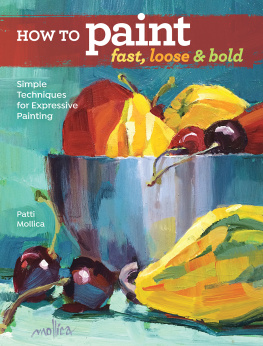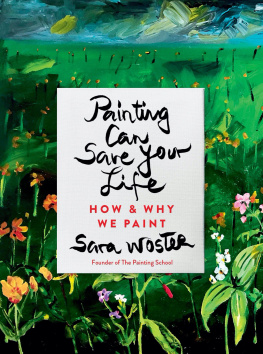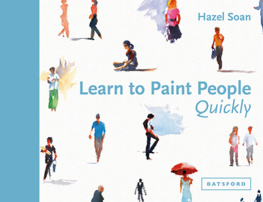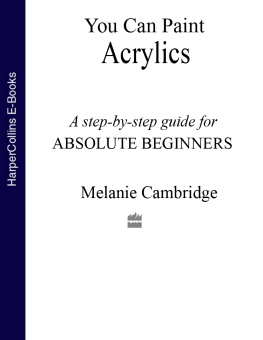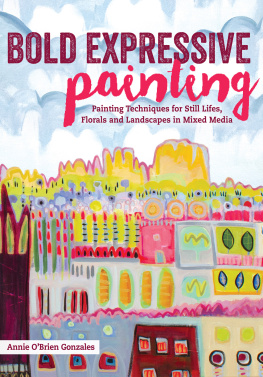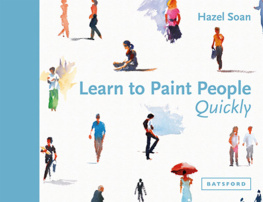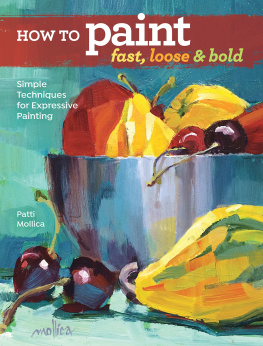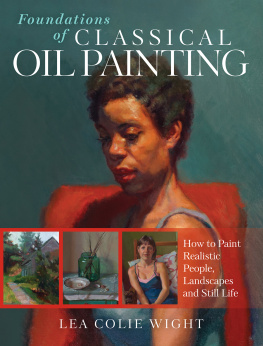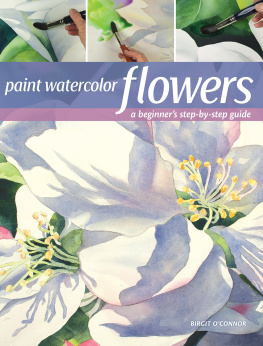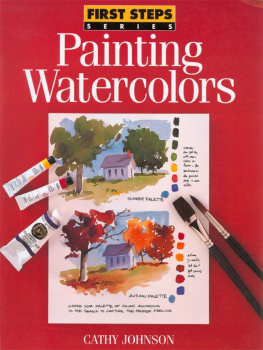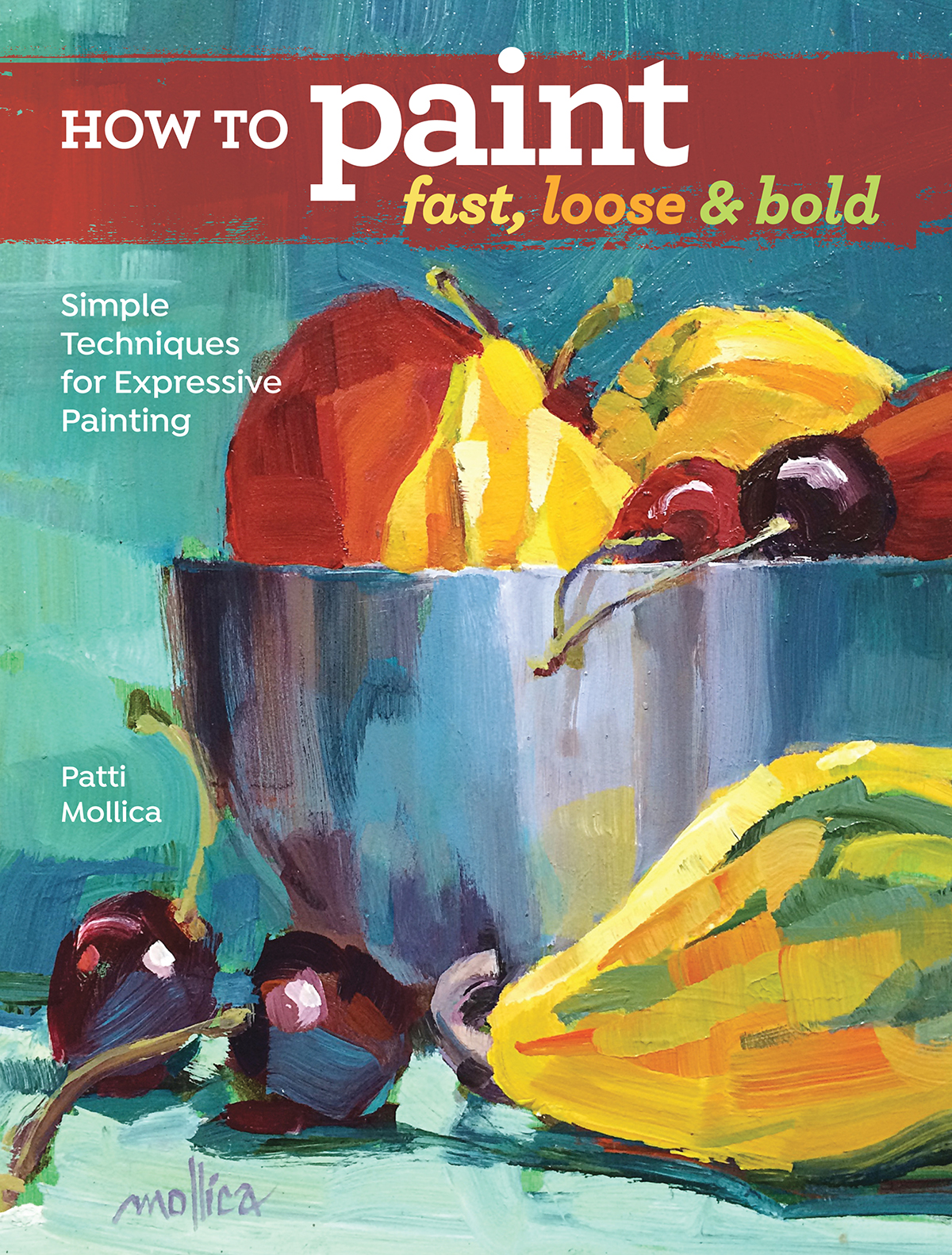Contents
Guide
How to Paint
Fast, Loose & Bold

Simple Techniques for Expressive Painting
Patti Mollica

Dedication
To my childhood babysitter, the enchanting Sheila, who always showed up for the gig with sketchbook and pastels in tow. She thoroughly dazzled and inspired this impressionable young girl, and forever changed the course of my life. I have many precious memories of afternoons spent wide-eyed, mesmerized and spell-bound, beholding raw talent flow effortlessly from her fingertips.
To my parents, Jack and Shirley Mollica, who have always whole-heartedly encouraged and supported my interest in being an artist.
To my husband, Mark Hagan, my soul mate and partner in living the artistic life.
Contents
WHAT YOU NEED
Surfaces
Hardboard panel or canvas board, white mat board
Pigments
Alizarin Crimson, Burnt Sienna, Burnt Umber, Cadmium Lemon Yellow, Cadmium Orange, Cadmium Red Light, Cadmium Yellow Light, Cadmium Yellow Medium, Carbon Black, Cerulean Blue, Diarylide Yellow, Green Gold, Manganese Blue, Neutral Gray N6, Paynes Gray, Permanent Violet Dark, Phthalo Blue (Green Shade), Phthalo Green, Quinacridone Magenta, Raw Umber, Sap Green, Teal, Titanium White, Ultramarine Blue, Yellow Ochre
Brushes
14"2" (6mm-51mm) flats or filberts, 116" (2mm) script brush
Other
black and white vine charcoal, color wheel, eraser, value scale

RED UMBRELLA | 8" 10" (20cm 25cm) | Acrylic on canvas | Private collection
Introduction
PAINTING FAST, LOOSE AND BOLD is what happens when you approach a painting with confidence. When you feel confident in your method and process, it shows in the finished painting. Fast: If you work with a value plan, a painting can be executed relatively quickly. Loose: If your color values are matched correctly, you can lay down definitive brushstrokes that have an overall looseness, without over-working. Bold: If you use fresh, unexpected colors that are matched to a strong well-composed design, your painting will read well from a distance and exude boldness.
Many people show up to my workshops with the impression that they will be learning to paint fast and furious. Yet, my approach would be better described as mindful. After all, anyone can paint fast and furious just give some paint to a two year old and watch the speed and energy that ensue. My method, however, is mainly geared toward representational painters who want to let go of all those little details that hold them back from being more expressive.
The question then becomes, how do you gain the artistic confidence that is required to produce paintings that look fast, loose and bold? It took me many years to hone the essential skills that helped me become a consistently better painter. Consistent is the key word here. You want your paintings to succeed on a consistent basis. For that to happen, you have to lay the necessary foundation on which to build strong, successful paintings.
My painting method is based on several building blocks that offer a solid foundation for painting with confidencevalues, color and brushwork. Once you are able to understand, practice and implement these basics, the door will open wide to a much freer painting experience. In this book, I will guide you through these fundamentals so that you, too, will be able to approach your paintings with confidence and enthusiasm.
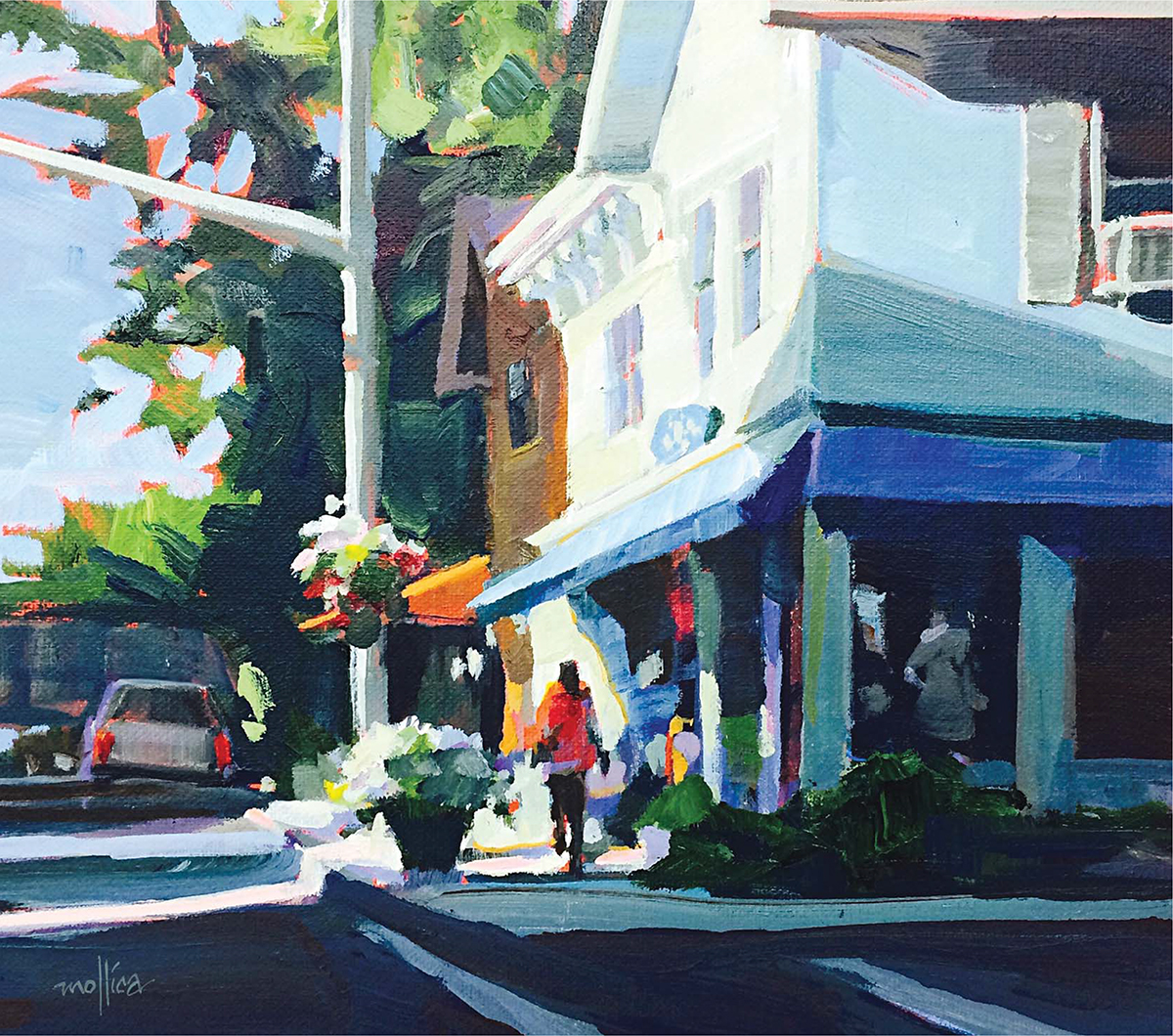
RYE CORNER
Acrylic on panel
12" 12" (30cm 30cm)
Collection of Colleen Ulrich
Choosing Supplies
Here is an overview of the materials youll need to get started. These suggestions are based on my own experience and preferences, but feel free to experiment with various tools and supplies to find what works best for you.
Paints
Use a lot of paint! Many students want juicy, luscious paintings, yet put out only dime-sized dollops of paint on their palettes. If you want your paintings to look painterly, you need to use lots of paint!
For acrylic painting, I prefer to use Golden Heavy Body Acrylic paints, which are excellent quality and professional-grade. If youre on a budget, you can buy student-grade paints. Just keep in mind that they will dry more dull and transparent because they contain less pigment. If you are a beginning painter, student-grade paints might be more conducive for experimenting without worrying about your budget.
I always have the following pigments on my palette when I paint. All these pigments are also included in the materials lists for the painting demonstrations in this book, even if they are not all used in the paintings.
- Burnt Umber
- Cadmium Red Light
- Cadmium Yellow Light
- Cerulean Blue or Phthalo Blue (Green Shade)
- Quinacridone Magenta
- Titanium White
- Ultramarine Blue
- Yellow Ochre
Optional colors I often use, depending on the subject matter, are:
- Alizarin Crimson
- Cadmium Orange
- Cadmium Red Medium
- Cadmium Yellow Medium
- Carbon Black
- Dioxazine Purple
- Green Gold
- Medium Gray
- Sap Green
If you are put off by the fast dry time of acrylics, there are several brands that allow a slower dry time. I have only experimented with Golden OPEN products, which have a dry time up to seven times slower than their Heavy Body counterpart. These paints have a slightly more fluid viscosity, so experiment to see if that feels right for you.
However, my preference is the (fast drying) Heavy Body paints. They are creamy and retain the brushstrokes when dry, so the ridges of the bristles are visible. I used Heavy Body paints in all the acrylic examples shown in this book. Other manufacturers in addition to Golden offer slow-drying acrylic options. Do a little research to see what suits your preferences and budget.
For oils, my favorite professional-grade paint is Williamsburg. I use colors that are the equivalent of the names mentioned for acrylics. Galkyd Lite is my medium of choice because it improves the flow of my mixtures and facilitates a faster dry time.
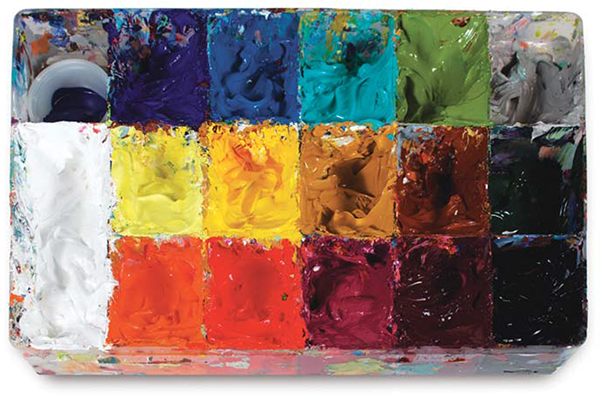
PAINTS
The paints in my container pictured here are: Phthalo Blue (Green Shade), Ultramarine Blue, Manganese Blue Hue, Teal, Green Gold, Neutral Gray N6, Cadmium Yellow Primrose, Cadmium Yellow Medium, Yellow Ochre, Burnt Sienna, Sap Green, Cadmium Orange, Cadmium Red Light, Quinacridone Magenta, Alizarin Crimson, Carbon Black and Titanium White.
Supports
I like to paint on a variety of surfaces. Stretched canvases, canvas boards, gessoed Ampersand panels and Strathmore Mixed-Media Board (with two coats of gesso) are all good supports for painting. For quick paintings and demonstrations, Ive found its best to work with small sizes like 8" 10" (20cm 25cm), 9" 12" (23cm 30cm) or 12" 12" (30cm 30cm).

